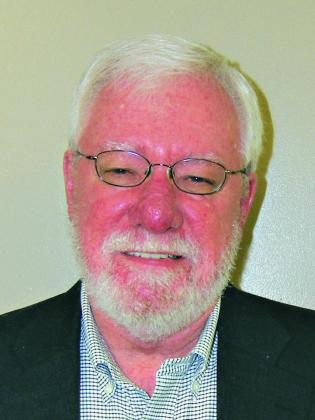
Jim Bradshaw
I’ll bet you didn’t even notice the earthquake in the Gulf of Mexico last Sunday. Don’t feel bad about it, not many people did.
According to the folks who measure such things, there was a 4.6 magnitude tremor centered about six miles deep about 160 miles southeast of New Orleans and 120 miles from Grand Isle about noon last Sunday (May 6).
It might have been noticed by sensitive souls as far away as New Orleans and Houma, but no there was no damage, nobody hurt, and no tsunami came roaring inland. According to the Richter Scale, a quake of that size can cause “noticeable shaking of indoor objects and rattling noises in the affected area,” so it might have rattled the china on an offshore platform or two, but that’s about it.
And that’s been about the size of it for practically all of the handful of little tremors that have affected Louisiana. According to a “Seismicity Map of the State of Louisiana” produced by the U.S. Geological Survey, “Louisiana residents have generally experienced low to moderate seismicity with more significant earthquakes occurring in the southeast corner and west central portion of the state.” Geophysicists at the National Earthquake Information Center say most of Louisiana’s tremors have been less than 75 miles from Baton Rouge.
It is interesting, to me at least, that there was another tremor of about the same size in almost exactly the same spot in the Gulf in 1986. Are two shakes in 32 years a pattern? Maybe we’d better watch where we fish in 2050.
What is regarded as Louisiana’s biggest earthquake was felt midway between Baton Rouge and Houma shortly before noon on Oct. 19, 1930. It damaged chimneys and broke windows at Napoleonville and cracked plaster at White Castle, northwest of Napoleonville. One in January 1870 was felt in St. Landry Parish and north to Alexandria. According to a Franklin Planter’s Banner report: “Houses trembled, lamps shook on the table so that they nearly upset, families were alarmed, and it produced a decided sensation. It was a genuine, outspoken earthquake; no shoddy about it.”
The Opelousas Journal described it as “a very decided oscillation of the earth … powerful enough to startle many of our citizens from their morning nap.”
Dr. C.D. Tatman, who lived at Chicot, 28 miles north of Opelousas, wrote to a friend that “the shock was sufficient to shake our house, heavy and substantially built as it is.” He said, “The poultry was all frightened from the roost. Some dogs howled and others barked lustily, as if about to attack something. The horses ran and snorted and the cattle were disturbed in their lairs and appeared terribly alarmed.”
Tatman said a friend of his “remembered … a much heavier shock … in St. Landry in the year 1823. Dishes danced on the table, houses rocked, and the inhabitants were much alarmed.”
The quake in May 1842 startled some people in south Louisiana but was not destructive. The St. Martinville Creole reported that “a respectable inhabitant of Catahoula who was angling at the time, in company with some ladies, on the banks of the lake, told us that as soon as the shock was felt they were all struck by a kind of giddiness, and that one of the ladies fell down in a swoon.”
A collection of Jim Bradshaw’s columns, Cajuns and Other Characters, is now available from Pelican Publishing. You can contact him at jimbradshaw4321@gmail.com or P.O. Box 1121, Washington LA 70589.
